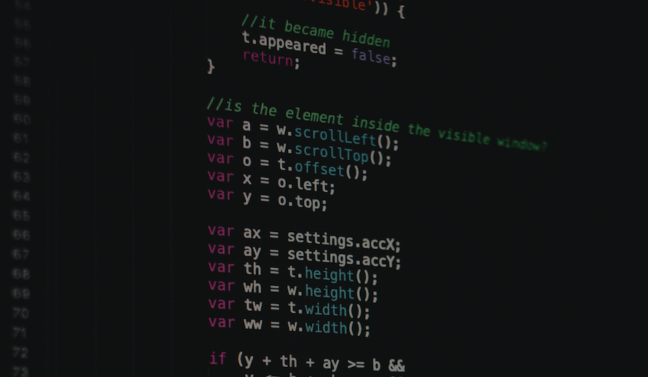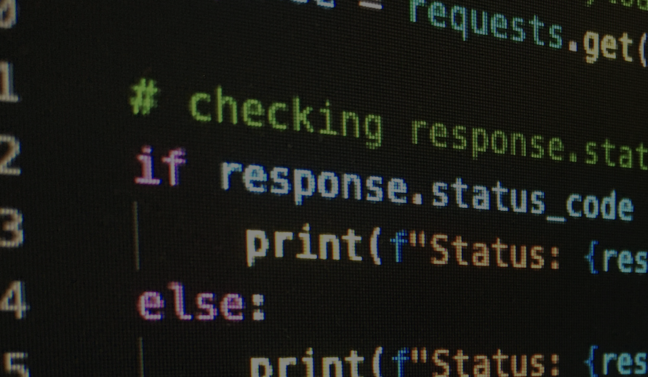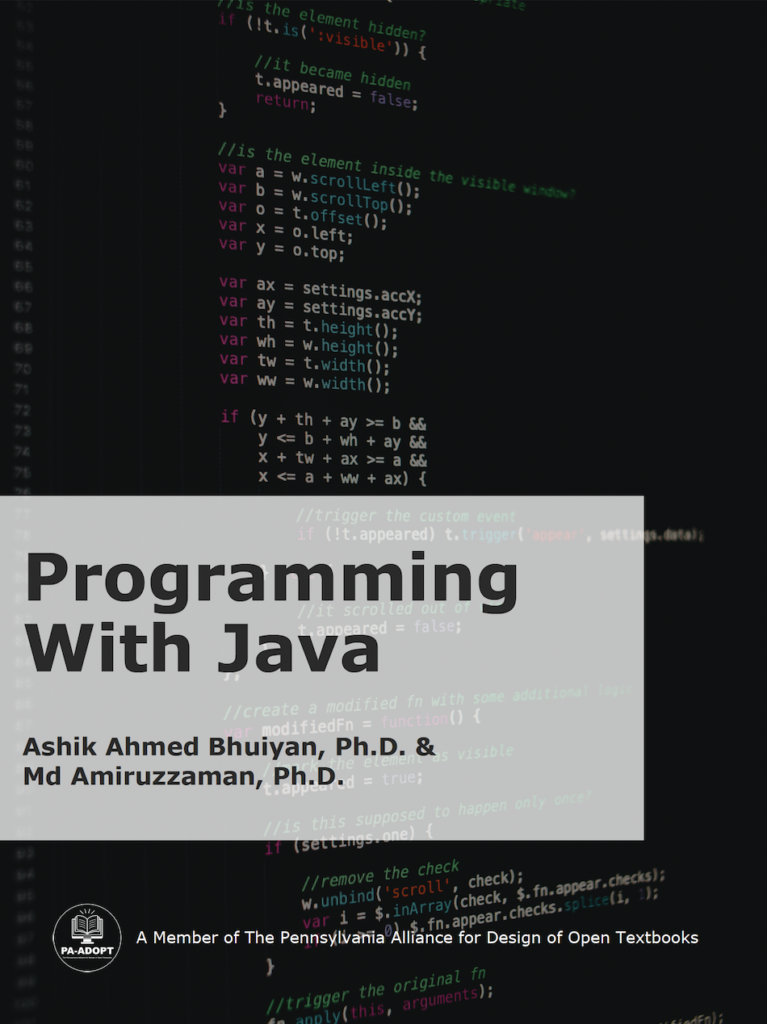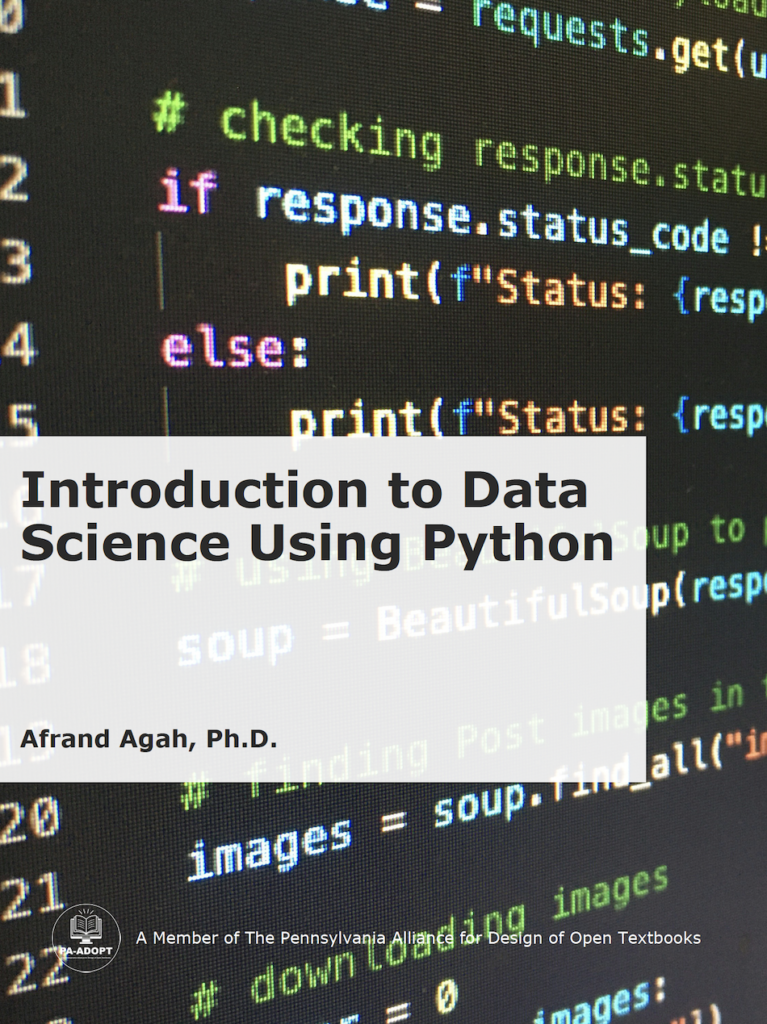
The Pennsylvania Alliance for Design of Open Textbooks (PA-ADOPT) is pleased to announce the immediate availability of our eleventh free and open eTextbook: Programming with Java by Dr. Ashik Ahmed Bhuiyan, Assistant Professor of Computer Science, and Dr. Md Amiruzzaman, Assistant Professor of Computer Science, at West Chester University.
“Programming with Java is a beginner-friendly eTextbook that introduces readers to the fundamentals of Java, one of the most widely used programming languages. It covers key concepts like syntax, data types, control structures, and object-oriented programming, offering clear explanations and practical examples. The chapters build progressively, making the material accessible even to those with little or no programming background. The book also explores important topics such as exception handling, file I/O, and basic data structures, providing a strong foundation for further computer science studies. With interactive exercises and end-of-chapter projects, readers can apply their knowledge through real-world applications. This eTextbook equips students with the skills they need to confidently take on advanced programming challenges and pursue successful careers in software development.”
Please help us spread the word about our books and web site to further our work to reduce costs for students, bring equity to higher education classrooms, and give faculty the flexibility to design their own learning experiences. All of our books are available to download in both ePub and PDF formats from our Bookshelf.
Programming with Java
by Ashik Ahmed Bhuiyan, Ph.D. and Md Amiruzzaman, Ph.D.
Keywords: Java programming, Object Oriented Programming, Programming Education
About the Book
Programming with Java is a beginner-friendly eTextbook that introduces readers to the fundamentals of Java, one of the most widely used programming languages. It covers key concepts like syntax, data types, control structures, and object-oriented programming, offering clear explanations and practical examples. The chapters build progressively, making the material accessible even to those with little or no programming background. The book also explores important topics such as exception handling, file I/O, and basic data structures, providing a strong foundation for further computer science studies. With interactive exercises and end-of-chapter projects, readers can apply their knowledge through real-world applications. This eTextbook equips students with the skills they need to confidently take on advanced programming challenges and pursue successful careers in software development.
Chapters
- Introduction
- Control Statements and Loops
- String
- Methods in Java
- Arrays
- Introduction to Classes and Objects
- File Handling
- References
Usage
Readers
The eTextbooks created as a part of this program are provided in two formats: ePub and PDF. Please refer to our Reader Support section for guidance on which format may be best for you and the device(s) you use.
Instructors
If you are an instructor seeking to use this eTextbook in your own course(s) please feel free to download the ePub and/or PDF file(s) for your use, but make sure to complete our eTextbook Usage Survey (this information is used for program evaluation purposes).
If you are interested in making revisions and edits to this eTextbook please note that this is possible since the book is under a Creative Commons License, which allows you to remix, reuse, revise, and redistribute the eTextbook. Please refer to the Faculty Support Page, specifically looking at Remixing. You can download Programming with Java Apple Pages File in order to use the original document to revise and remix the eTextbook for your purposes.
Citations
MLA: Bhuiyan, Ashik Ahmed; Amiruzzaman, Md. Programming with Java. Second, The Pennsylvania Alliance for Design of Open Textbooks (PA-ADOPT), 2025.
APA: Bhuiyan, A. A.; Amiruzzaman, M. (2025). Programming with Java. (Second). The Pennsylvania Alliance for Design of Open Textbooks (PA-ADOPT).
Chicago: Bhuiyan, Ashik Ahmed; Amiruzzaman, Md. Programming with Java. Second The Pennsylvania Alliance for Design of Open Textbooks (PA-ADOPT), 2025.
Peer Review
This eTextbook went through an Open Peer Review process. The peer review process used the Open SUNY Textbook Peer Review Guidelines, allowing peer reviewers to read the text carefully and evaluate the following:
- Educational Significance of Content including accuracy, appropriate and useful materials, valid and significant concepts, models, and skills, and key elements;
- Effectiveness as a Teaching Resource including a clear explanation of the concepts, alignment of materials to the learning process of the target audience, and alignment of the learning objectives with course goals; and
- Readability and Ease of Use including clarity and comprehensiveness, consistent writing style, readability and ease of use (logic, sequence, and flow), appropriateness for target readership level, and quality of Interactivity and multimedia learning objects.
As a part of the open peer review process, the public review conducted by Dr. Richard Burns is made available: Peer Review Document (PDF).

The Pennsylvania Alliance for Design of Open Textbooks (PA-ADOPT) is pleased to announce the immediate availability of our eighth free and open eTextbook: Introduction to Data Science Using Python by Dr. Afrand Agah, Professor of Computer Science at West Chester University.
“This book contains two parts, the first is designed to be used in an introductory programming course for students looking to learn Python, without having any prior experience with programming. Basic programming concepts are discussed, explained, and illustrated with a Python program. Ample programming questions are provided for practice. The second part of the book utilizes machine-learning concepts and statistics to accomplish data-driven resolutions. Python programs are provided to apply scientific computing to conclude statistically driven results.”
Please help us spread the word about our books and web site to further our work to reduce costs for students, bring equity to higher education classrooms, and give faculty the flexibility to design their own learning experiences. All of our books are available to download in both ePub and PDF formats from our Bookshelf.
Introduction to Data Science Using Python
by Afrand Agah, Ph.D.
Keywords: Data Science, Machine Learning, Python
About the Book
This book contains two parts, the first is designed to be used in an introductory programming course for students looking to learn Python, without having any prior experience with programming. Basic programming concepts are discussed, explained, and illustrated with a Python program. Ample programming questions are provided for practice. The second part of the book utilizes machine-learning concepts and statistics to accomplish data-driven resolutions. Python programs are provided to apply scientific computing to conclude statistically driven results.
Chapters
- Installing Python
- Introduction to Pragramming
- Decision Structures
- Repetitions
- Functions
- Recursion
- File Access
- Lists
- Arrays
- Plotting Graphs
- Object Oriented Programming
- Using Python Packages
- Python and Graph Theory
- Python and Machine Learning
- Python and Statistics
Usage
Readers
The eTextbooks created as a part of this program are provided in two formats: ePub and PDF. Please refer to our Reader Support section for guidance on which format may be best for you and the device(s) you use.
Instructors
If you are an instructor seeking to use this eTextbook in your own course(s) please feel free to download the ePub and/or PDF file(s) for your use, but make sure to complete our eTextbook Usage Survey (this information is used for program evaluation purposes).
If you are interested in making revisions and edits to this eTextbook please note that this is possible since the book is under a Creative Commons License, which allows you to remix, reuse, revise, and redistribute the eTextbook. Please refer to the Faculty Support Page, specifically looking at Remixing. You can download Introduction to Data Science using Python Apple Pages File in order to use the original document to revise and remix the eTextbook for your purposes.
Citations
MLA: Agah, Afrand. Introduction to Data Science Using Python. First, The Pennsylvania Alliance for Design of Open Textbooks (PA-ADOPT), 2024.
APA: Agah, A. (2024). Introduction to Data Science Using Python. (First). The Pennsylvania Alliance for Design of Open Textbooks (PA-ADOPT).
Chicago: Agah, A. Introduction to Data Science Using Python. First. The Pennsylvania Alliance for Design of Open Textbooks (PA-ADOPT), 2024.
Peer Review
This eTextbook went through an Open Peer Review process. The peer review process used the Open SUNY Textbook Peer Review Guidelines, allowing peer reviewers to read the text carefully and evaluate the following:
- Educational Significance of Content including accuracy, appropriate and useful materials, valid and significant concepts, models, and skills, and key elements;
- Effectiveness as a Teaching Resource including a clear explanation of the concepts, alignment of materials to the learning process of the target audience, and alignment of the learning objectives with course goals; and
- Readability and Ease of Use including clarity and comprehensiveness, consistent writing style, readability and ease of use (logic, sequence, and flow), appropriateness for target readership level, and quality of Interactivity and multimedia learning objects.
As a part of the open peer review process, the public review conducted by Dr. Mehran Asadi is made available: Peer Review Document (PDF).

The Pennsylvania Alliance for Design of Open Textbooks (PA-ADOPT) is pleased to announce the immediate availability of our seventh free and open eTextbook: Basic Statistics Using R for Crime Analysis by Dr. Jaeyong Choi, Assistant Professor of Criminal Justice at West Chester University.
“Limited access to subscription-based statistical software poses obstacles when students want to apply the skills they acquired in college. Although students may learn programs like SPSS or Stata while at the university, they often find themselves unable to continue using these programs after graduation, making their acquired skills obsolete. As an open-source software program, R offers a solution to this challenge. It is freely accessible to anyone, including students, after they graduate. Therefore, I decided to write a freely available book for those interested in becoming crime analysts, focusing on learning statistics without delving too deeply into mathematics. Moreover, this book emphasizes practical applications by utilizing R for data analysis, ensuring students can develop relevant skills beyond the university. I hope that students can easily follow the instructions in this book and replicate the same outcomes using the provided data. This practical experience will demonstrate the value of statistics and R, ideally inspiring students to further their learning in these areas.”
Please help us spread the word about our books and web site to further our work to reduce costs for students, bring equity to higher education classrooms, and give faculty the flexibility to design their own learning experiences. All of our books are available to download in both ePub and PDF formats from our Bookshelf.





